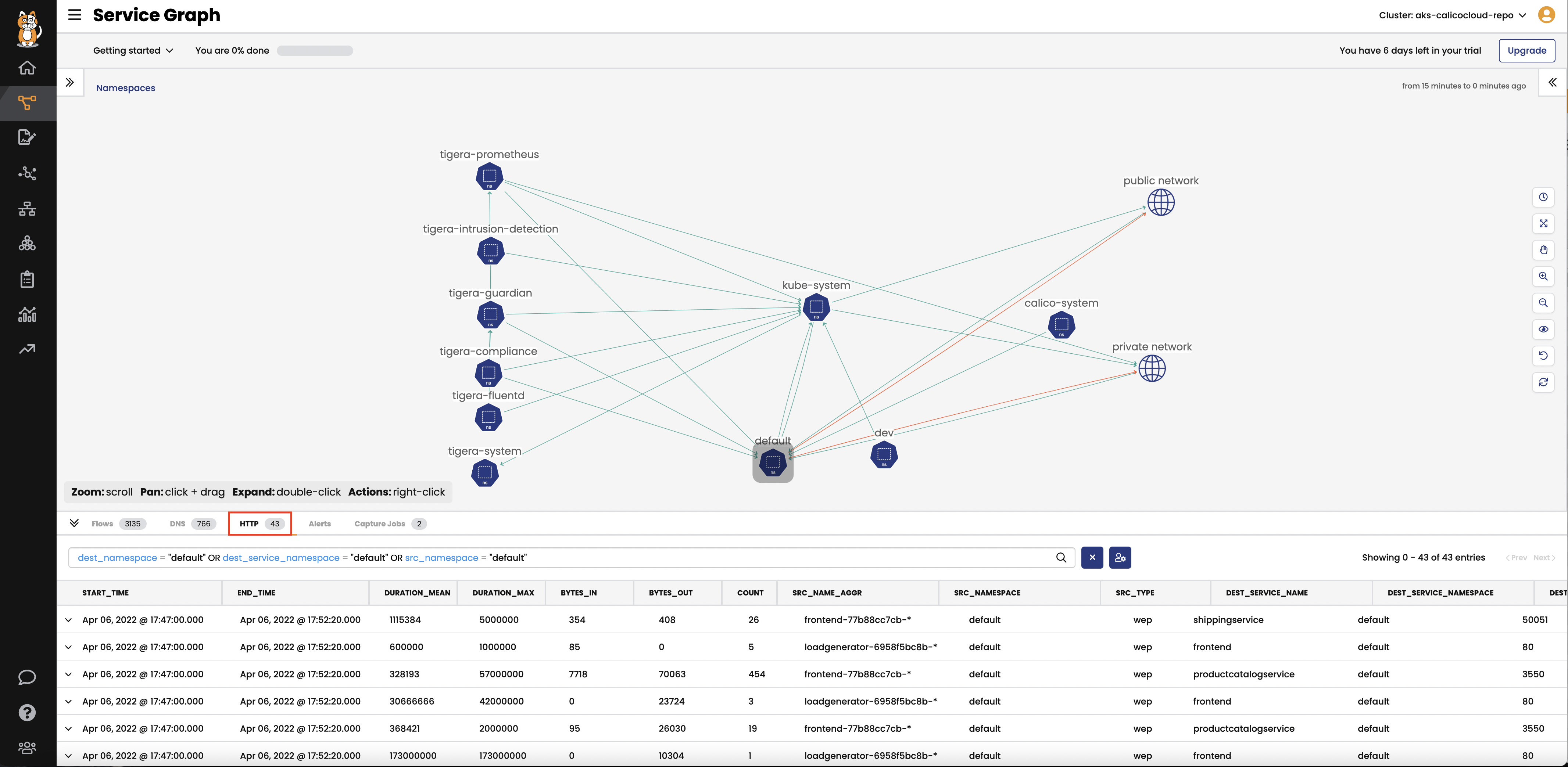kubernetes-hackfest
Delivering modern cloud-native applications with open source technologies on Azure Kubernetes Service
Module 9: Enabling L7 visibility
Goal: Enable L7/HTTP flow logs in hipstershop with Calico cloud. Calico cloud not only can provide L3 flow logs, but also can provide L7 visibility without service mesh headache.
Docs: https://docs.tigera.io/visibility/elastic/l7/configure
Steps
-
Configure Felix for log data collection and patch Felix with AKS specific parameters
Enable the Policy Sync API in Felix - we configure this cluster-wide
kubectl patch felixconfiguration default --type='merge' -p '{"spec":{"policySyncPathPrefix":"/var/run/nodeagent"}}' -
Since Calico Cloud v3.11 L7 visibility is deployed using an
ApplicationLayerresource. Calico’s operator will deploy the envoy and log collector containers as a daemonset. To deploy the ApplicationLayer resource:kubectl apply -f -<<EOF apiVersion: operator.tigera.io/v1 kind: ApplicationLayer metadata: name: tigera-secure spec: logCollection: collectLogs: Enabled logIntervalSeconds: 5 logRequestsPerInterval: -1 EOF - If successfully deployed an
l7-log-collectorpod will be deployed on each node. To verify:kubectl get pod -n calico-systemOutput will look similar to:
NAME READY STATUS RESTARTS AGE calico-kube-controllers-6b4dccd6c5-579s8 1/1 Running 0 120m calico-node-b26qh 1/1 Running 0 120m calico-node-pl646 1/1 Running 0 2m2s calico-node-rmx2q 1/1 Running 0 120m calico-typha-6f7f966d4-28n9j 1/1 Running 0 122m calico-typha-6f7f966d4-8nx5f 1/1 Running 0 2m1s calico-typha-6f7f966d4-g7b69 1/1 Running 0 122m l7-log-collector-627qf 2/2 Running 0 91s l7-log-collector-6b6cx 2/2 Running 0 3m52s l7-log-collector-jxzjq 2/2 Running 0 15m -
Annotate the Boutiqueshop Services
kubectl annotate svc -n default adservice projectcalico.org/l7-logging=true kubectl annotate svc -n default cartservice projectcalico.org/l7-logging=true kubectl annotate svc -n default checkoutservice projectcalico.org/l7-logging=true kubectl annotate svc -n default currencyservice projectcalico.org/l7-logging=true kubectl annotate svc -n default emailservice projectcalico.org/l7-logging=true kubectl annotate svc -n default frontend projectcalico.org/l7-logging=true kubectl annotate svc -n default paymentservice projectcalico.org/l7-logging=true kubectl annotate svc -n default productcatalogservice projectcalico.org/l7-logging=true kubectl annotate svc -n default recommendationservice projectcalico.org/l7-logging=true kubectl annotate svc -n default redis-cart projectcalico.org/l7-logging=true kubectl annotate svc -n default shippingservice projectcalico.org/l7-logging=true - [Optional] restart the pods of
boutiqueshopif you want to see l7 logs right away.L7 flow logs will require a few minutes to generate, you can also restart pods which will lead l7 logs pop up quicker.
kubectl delete pods --all
Now view the L7 logs in Kibana by selecting the L7 HTTP Dashboard. You should also see the relevant HTTP log from service graph.
